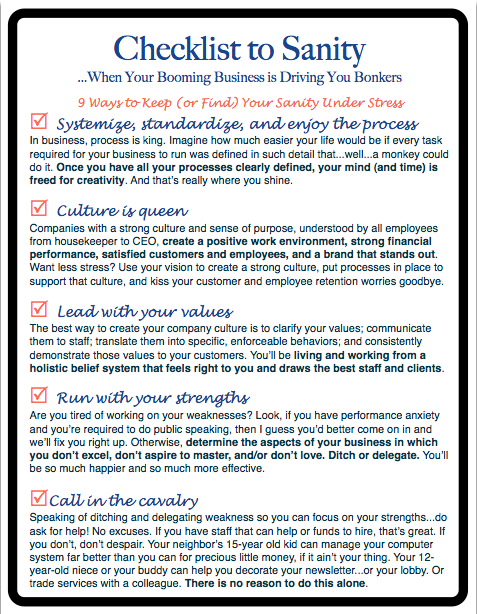 A couple of weeks ago, I asked the owners of a thriving, rapidly growing small business if they have an organizational chart. No big surprise, but their eyes glazed over instantly, – as do mine every time I’m asked to generate one for a business this size. While my clients felt a bit sheepish admitting the org-chart absence, I applauded them for being way ahead of the curve! Org-charts are out and business model maps are in. Never heard of a business model map? No problem. Read on and you’ll know what it is, why you need it, how to create it (easily), and how you can get more info for free! Aren’t you glad you stopped by?
A couple of weeks ago, I asked the owners of a thriving, rapidly growing small business if they have an organizational chart. No big surprise, but their eyes glazed over instantly, – as do mine every time I’m asked to generate one for a business this size. While my clients felt a bit sheepish admitting the org-chart absence, I applauded them for being way ahead of the curve! Org-charts are out and business model maps are in. Never heard of a business model map? No problem. Read on and you’ll know what it is, why you need it, how to create it (easily), and how you can get more info for free! Aren’t you glad you stopped by?
The Smackdown: Org Chart vs. Business Model Map
A Business Model Map (BMM) lays out the relationships among the key components of your business: departments, processes, and employees. As a quick aside, processes are basically everything your company does, from reconciling financials to handling customer complaints, to maintaining equipment. So, how is this different from a traditional org-chart?
Well, a BMM focuses on how and what things get done and by whom, where an org-chart is hung up on job titles, authority hierarchies, and power structures. In an org-chart, the pyramid up is an indicator of status and sets up a company atmosphere of rivalry, manipulation, and information filtering so that front-line employees are the proverbial “last to know.” While an org-chart is a static document that really only lays out the power structure, a BMM serves as a sleek and straightforward strategic tool.
The BMM focuses on processes and personal responsibility. It empowers all employees to manage, assess, and improve the processes in their purview. It is a map of what happens and who’s responsible, rather than a depiction of hierarchy. It can also be used as a strategic planning tool, making it easy to identify operational gaps and clarify the route toward process improvement.
The Clear Winner
The structure of a BMM is straightforward and simply parallels the structure of your company. There isn’t much jargon in this system, but it is helpful to clarify a bit of terminology.
- Process areas are listed for each department and include a list of each employee involved in each process.
- Each process is an individual work activity or task and not a job-description. It’s important to note that any employee may be involved with or responsible for multiple processes and a process may involve multiple employees.
- One employee serves as process manager for each process – typically the most knowledgable person. Rather than a job title that may or may not describe anything concrete, a process is an explicit answer to the question, “What do you do at work?” Wouldn’t it be great if every employee could answer that question in a meaningful way?
- Departments categorize related work activities. They may look like traditional org-chart departments (i.e., Lab work, Office management, Billing, etc.) but, depending on the size of your company, you may chose names that more closely depict the tasks of that department (i.e., Customer Interface, Back Room Activities, etc.).
Yours Truly, For Example…
Here’s an example from right here at Strategies for Change. There are several departments, including Therapy, Coaching, Administration, Bookkeeping, and Training. Within the Bookkeeping Department, there are many processes including accounts receivable, invoice preparation, creation of client statements, reconciliation, and insurance issues. My bookkeeper handles accounts receivable and, as my most experienced employee, serves as the process manager. One virtual assistant handles client statements and another handles insurance issues. Together, they serve as the process team.
In Sum
Starting to see how practical a BMM can be? It allows you to:
- Review company, department and process objectives and make sure they are complementary and aligned.
- Configure your business for maximum efficiency.
- Identify operational gaps that need to be filled.
- Help your employees understand how all the moving parts of your company work together and how they fit into the bigger picture.
- Assign responsibility to frontline employees.
- Communicate your company’s strategic plan.
Leave the org-chart in the business proposal you wrote for your bank or, better yet, don’t bother creating one at all. Instead, focus on mapping your business and use that map continuously to guide the actions and choices of your employees…and you!
Check out this post if you want to learn more about process management and the Process Management Worksheet.

FREE 9-point 'Checklist for Sanity' | Manage your business. Have a life.
We promise to never sell, rent, trade, or share your e-mail with any other organization.
* All fields required







